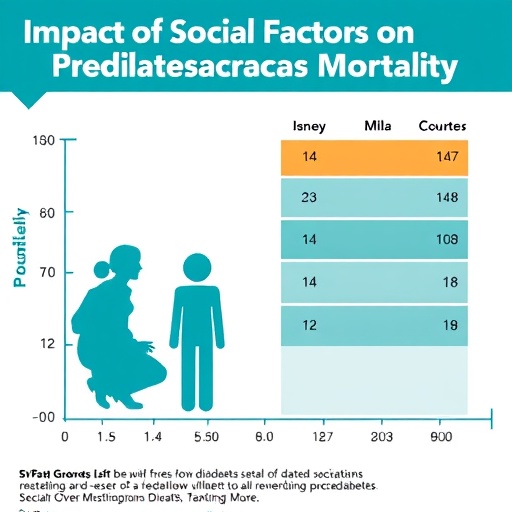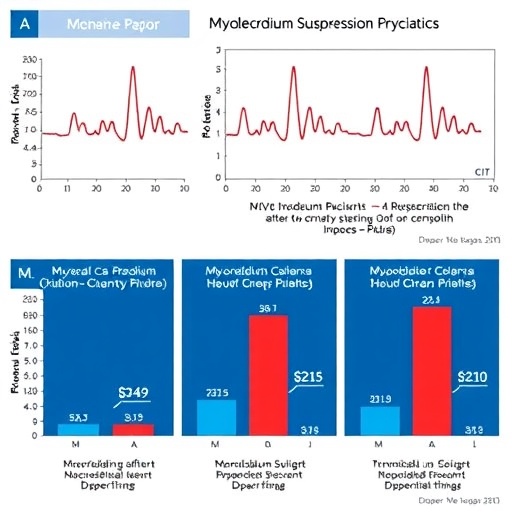PHILADELPHIA — Despite the success of immunotherapies based on blocking the programmed cell death 1 (PD-1) receptor protein in metastatic melanoma patients, more than half do not experience a lasting benefit by seeing their tumors shrink. One possible reason the drug doesn't work well for all patients is that these PD-1 blocking drugs lack a biological effect in many patients. However, new studies now indicate that 80 percent of these patients do, in fact, have an increase in the number of responding T cells to these types of treatments. The PD-1-targeting antibody pembrolizumab is a checkpoint inhibitor drug that takes the brake off the PD-1 receptor to allow T cells to replicate and react more strongly to cancer cells.
But why the considerable disconnect between shrinking tumors and ballooning T cell numbers in this patient population? A new study published in Nature provides clues that could enhance physicians' ability to pinpoint, in real-time, which patients are not responding to therapy – and intervene with additional drugs to boost the chances of shrinking tumors. The paper is the first major publication to come out of the Parker Institute for Cancer Immunotherapy research collaborative.
"We found that the size of the pretreatment tumor determined how strong of a T cell response was needed in response to the drug to shrink a patient's tumor," said senior author E. John Wherry, PhD, a professor of Microbiology and co-director of the Parker Institute for Cancer Immunotherapy at the Perelman School of Medicine at the University of Pennsylvania. "The bigger the tumor, the more T cell 'reinvigoration' was needed by the drug. The 'clinical failure' that many patients experience was not solely due to an inability to spur the immune system, but rather resulted from an imbalance between the intensity of T-cell reinvigoration and initial tumor burden."
The study was also led by Tara C. Gangadhar, MD, a professor of Hematology-Oncology and physician in Penn's Abramson Cancer Center, along with colleagues from Memorial Sloan Kettering Cancer Center (MSK). Using immune profiling of peripheral blood from patients with stage IV melanoma before and after treatment with pembrolizumab, the team identified changes in circulating T cells compared with tumor size at the start of treatment. They studied changes in the blood of 47 patients (29 at Penn's Abramson Cancer Center and 18 from MSK). The relationship between these two measurements provides new insights into the response to this type of immunotherapy.
"This research helps to answer some of the critical questions around why some patients don't respond to anti-PD1 inhibitors and why some do," said co-author Jedd Wolchok, MD, PhD, chief of the Immunotherapeutics Service and director of the Parker Institute for Cancer Immunotherapy at MSK. "We wanted to understand what was happening to the immune system of patients that were treated with an anti-PD 1 antibody and to characterize the immunologic changes that were happening in these patients."
When melanoma patients fail to respond to the PD-1 blockade, it is not all for the same reasons. By relating the re-invigoration of the immune response to tumor burden, these findings highlight three specific ways a checkpoint inhibitor treatment can fail: it does not elicit a re-invigorated immune response, the immune effect is inadequate compared to the size of the tumor, or the drug effect is off target.
"The beauty of this study is that we can now define different types of treatment failure earlier to quickly tailor a secondary treatment regimen based on the type of therapeutic failure," Wherry said.
After three to six weeks of treatment, oncologists will be able to use this approach to tell if a patient is in the half that benefit from the drugs, which is six weeks earlier than the normal 12-week endpoint in PD-1 clinical trials. If a patient is not being helped by pembrolizumab, physicians would then be able to start them on another type of drug to amplify the immune call-to-action of the first drug by matching the type of additional treatment to the type of failure in the first PD-1 blockade treatment.
"This is an entirely new disease treatment paradigm — matching the pre-treatment size of the tumor to the strength of the immune response (to the treatment itself) as a way to define types of treatment successes and failures," Wherry said. "In addition, by focusing on the clinically relevant, but rare cell type in the blood that is the likely biological target of PD-1 blockade – 'the exhausted' T cell — we were able to gain insights into immunological events occurring at distant tumor sites during treatment."
###
Study co-author Robert Vonderheide, MD, DPhil, the vice chief of research in the division of Hematology-Oncology, also serves as co-director of the Parker Institute for Cancer Immunotherapy at Penn. The Parker Institute was founded in April 2016 by entrepreneur and philanthropist Sean Parker to foster greater collaboration between the country's cancer centers with the goal of accelerating immunotherapy research for the benefit of patients. Penn and MSK are two of the six cancer centers that form the core of the Parker Institute.
This research was funded by the National Institutes of Health (R01 AI105343, P01 AI108545, U19 AI082630, P50-CA174523), the Tara Miller Foundation, the German Research Foundation fellowship, the Penn Department of Medicine Measey Research Fellowship Award, the Melanoma Research Alliance, a Robertson Foundation/Cancer Research Institute Irvington Fellowship, the Ludwig Center for Cancer Immunotherapy, Swim Across America, Conquer Cancer Foundation, and the Parker Institute for Cancer Immunotherapy.
Penn Medicine is one of the world's leading academic medical centers, dedicated to the related missions of medical education, biomedical research, and excellence in patient care. Penn Medicine consists of the Raymond and Ruth Perelman School of Medicine at the University of Pennsylvania (founded in 1765 as the nation's first medical school) and the University of Pennsylvania Health System, which together form a $6.7 billion enterprise.
The Perelman School of Medicine has been ranked among the top five medical schools in the United States for the past 20 years, according to U.S. News & World Report's survey of research-oriented medical schools. The School is consistently among the nation's top recipients of funding from the National Institutes of Health, with $392 million awarded in the 2016 fiscal year.
The University of Pennsylvania Health System's patient care facilities include: The Hospital of the University of Pennsylvania and Penn Presbyterian Medical Center — which are recognized as one of the nation's top "Honor Roll" hospitals by U.S. News & World Report — Chester County Hospital; Lancaster General Health; Penn Wissahickon Hospice; and Pennsylvania Hospital — the nation's first hospital, founded in 1751. Additional affiliated inpatient care facilities and services throughout the Philadelphia region include Good Shepherd Penn Partners, a partnership between Good Shepherd Rehabilitation Network and Penn Medicine.
Penn Medicine is committed to improving lives and health through a variety of community-based programs and activities. In fiscal year 2016, Penn Medicine provided $393 million to benefit our community.
Media Contact
Holly Auer
[email protected]
215-200-2313
@PennMedNews
http://www.uphs.upenn.edu/news/
############
Story Source: Materials provided by Scienmag




